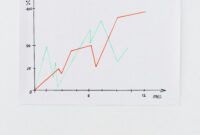Predictive analytics in business intelligence is revolutionizing the way companies operate and make decisions. By leveraging data and advanced algorithms, businesses can forecast trends, identify opportunities, and mitigate risks more effectively. This comprehensive guide explores the various aspects of predictive analytics in business intelligence, its benefits, implementation strategies, and the future of this transformative technology.
Understanding Predictive Analytics in Business Intelligence
Predictive analytics is a branch of advanced analytics that uses historical data, statistical algorithms, and machine learning techniques to identify the likelihood of future outcomes. Business intelligence (BI) involves technologies, applications, and practices for the collection, integration, analysis, and presentation of business information. When combined, predictive analytics in business intelligence enables companies to make proactive, data-driven decisions.
Key Components of Predictive Analytics
- Data Collection: Gathering relevant and high-quality data from various sources.
- Data Preparation: Cleaning and organizing data to ensure accuracy and consistency.
- Modeling: Using statistical and machine learning models to analyze data and make predictions.
- Deployment: Implementing the predictive models into business processes.
- Monitoring and Maintenance: Continuously evaluating model performance and updating as necessary.
Benefits of Predictive Analytics in Business Intelligence
Predictive analytics offers numerous advantages for businesses looking to stay competitive:
- Improved Decision Making: By anticipating future trends, businesses can make more informed decisions.
- Enhanced Operational Efficiency: Predictive models help streamline processes and reduce waste.
- Risk Management: Identifying potential risks before they materialize allows businesses to take preventive measures.
- Customer Insights: Analyzing customer behavior leads to better targeting and personalized marketing strategies.
- Revenue Growth: Optimizing operations and marketing efforts directly impacts the bottom line.
Real-World Applications
- Marketing: Predicting customer responses to campaigns and optimizing marketing strategies.
- Finance: Forecasting stock prices, managing risk, and detecting fraudulent activities.
- Supply Chain: Anticipating demand fluctuations and optimizing inventory management.
- Healthcare: Predicting patient outcomes and improving treatment plans.
Implementing Predictive Analytics in Business Intelligence
Successful implementation of predictive analytics in business intelligence requires careful planning and execution. Here are the key steps:
Define Objectives and Goals
Clearly outline what you aim to achieve with predictive analytics. This could be increasing sales, reducing churn, or improving operational efficiency.
Collect and Prepare Data
Gather data from various sources such as CRM systems, social media, and transaction logs. Ensure the data is clean, consistent, and relevant to your objectives.
Choose the Right Tools and Technologies
Select tools and platforms that align with your business needs. Popular options include IBM Watson, SAS, and Microsoft Azure.
Develop and Test Models
Build predictive models using historical data. Test these models to ensure accuracy and reliability. Common techniques include regression analysis, decision trees, and neural networks.
Deploy and Monitor
Integrate the predictive models into your business processes. Continuously monitor their performance and make adjustments as needed to maintain accuracy.
Future Trends in Predictive Analytics in Business Intelligence
The landscape of predictive analytics in business intelligence is constantly evolving. Here are some emerging trends:
Increased Use of AI and Machine Learning
Artificial intelligence and machine learning are becoming integral to predictive analytics, enabling more accurate and sophisticated models.
Integration with Big Data Technologies
With the rise of big data, predictive analytics is leveraging vast amounts of data to improve predictions and uncover deeper insights.
Real-Time Analytics
Businesses are moving towards real-time predictive analytics, allowing them to make decisions on the fly and respond quickly to changing conditions.
Enhanced Data Visualization
Advanced data visualization tools are helping businesses interpret predictive analytics results more effectively, making it easier to communicate insights and take action.
Conclusion
Predictive analytics in business intelligence is a powerful tool that can drive significant improvements in decision-making, operational efficiency, and overall business performance. By understanding the key components, benefits, and implementation strategies, businesses can harness the full potential of this technology. As AI, machine learning, and big data continue to evolve, the capabilities of predictive analytics will only grow, offering even more opportunities for businesses to thrive.
FAQ
What is predictive analytics in business intelligence?
Predictive analytics in business intelligence involves using historical data, statistical algorithms, and machine learning techniques to forecast future trends and outcomes, enabling businesses to make data-driven decisions.
How can predictive analytics benefit my business?
Predictive analytics can improve decision-making, enhance operational efficiency, manage risks, provide customer insights, and drive revenue growth by leveraging data to anticipate future trends and behaviors.
What tools are commonly used for predictive analytics?
Popular tools for predictive analytics include IBM Watson, SAS, Microsoft Azure, and various machine learning frameworks like TensorFlow and Scikit-Learn.
What are some common applications of predictive analytics in business?
Common applications include marketing (predicting customer responses), finance (forecasting stock prices), supply chain (demand forecasting), and healthcare (predicting patient outcomes).
What are the future trends in predictive analytics?
Future trends include increased use of AI and machine learning, integration with big data technologies, real-time analytics, and enhanced data visualization techniques.



